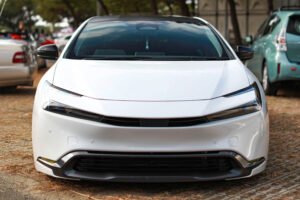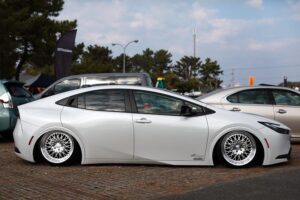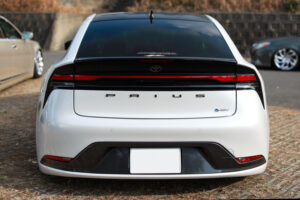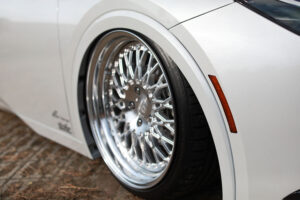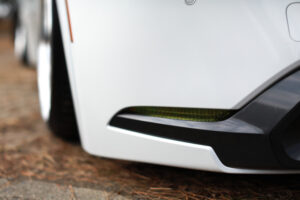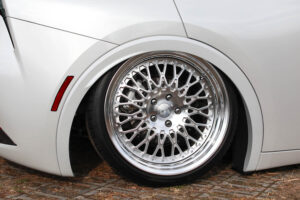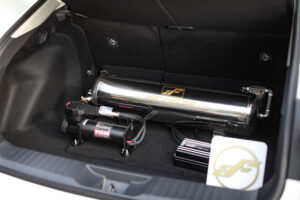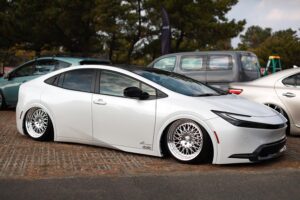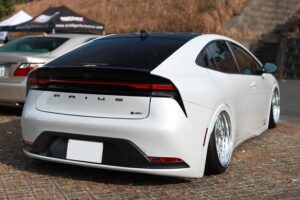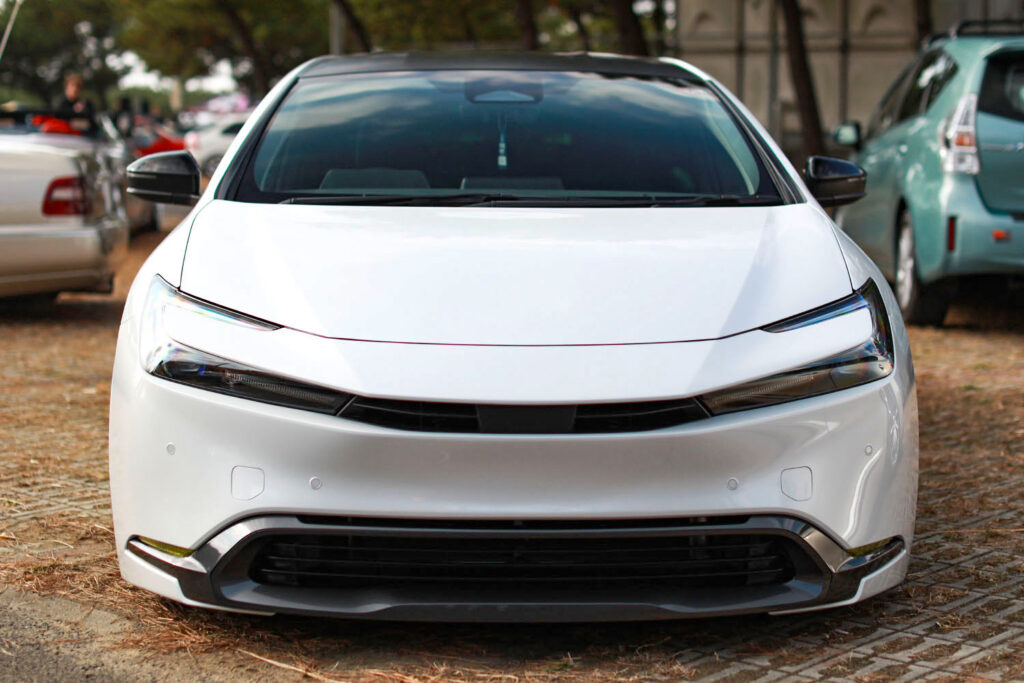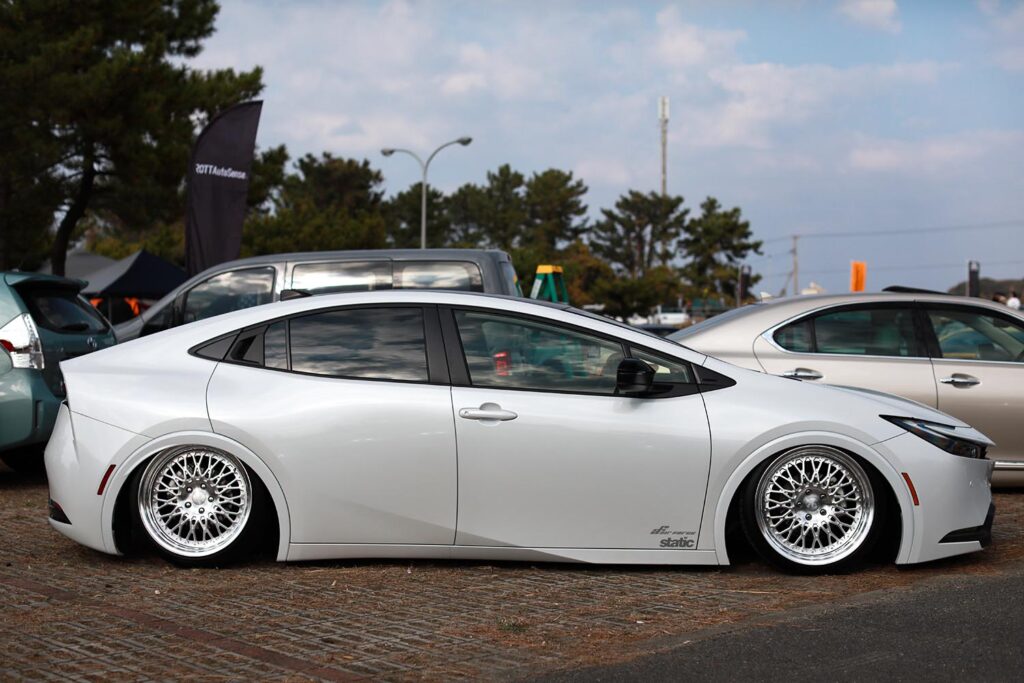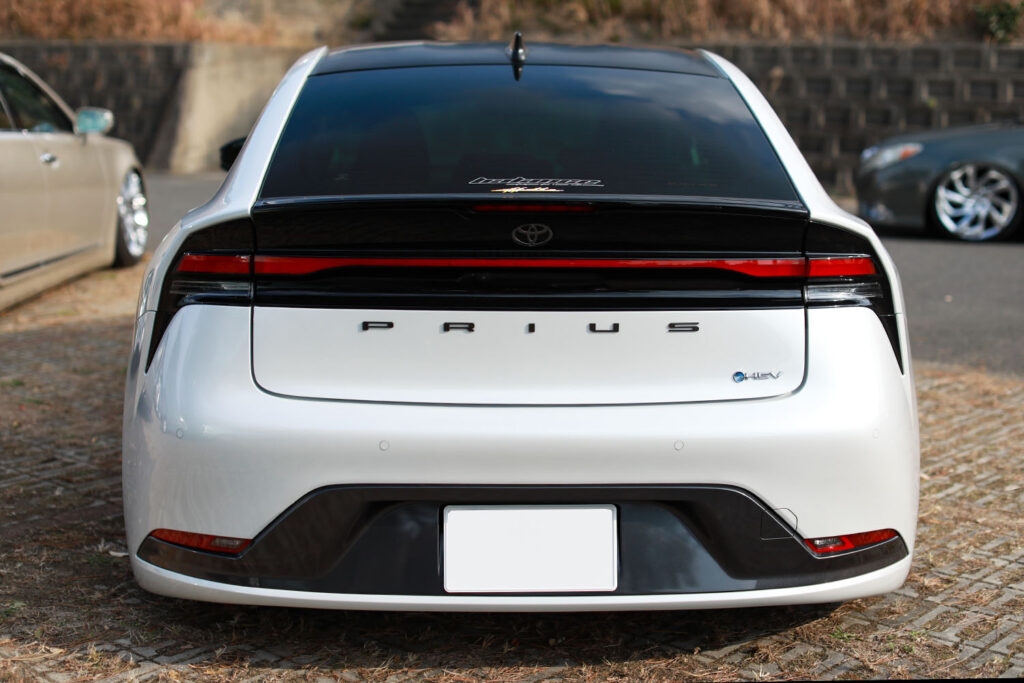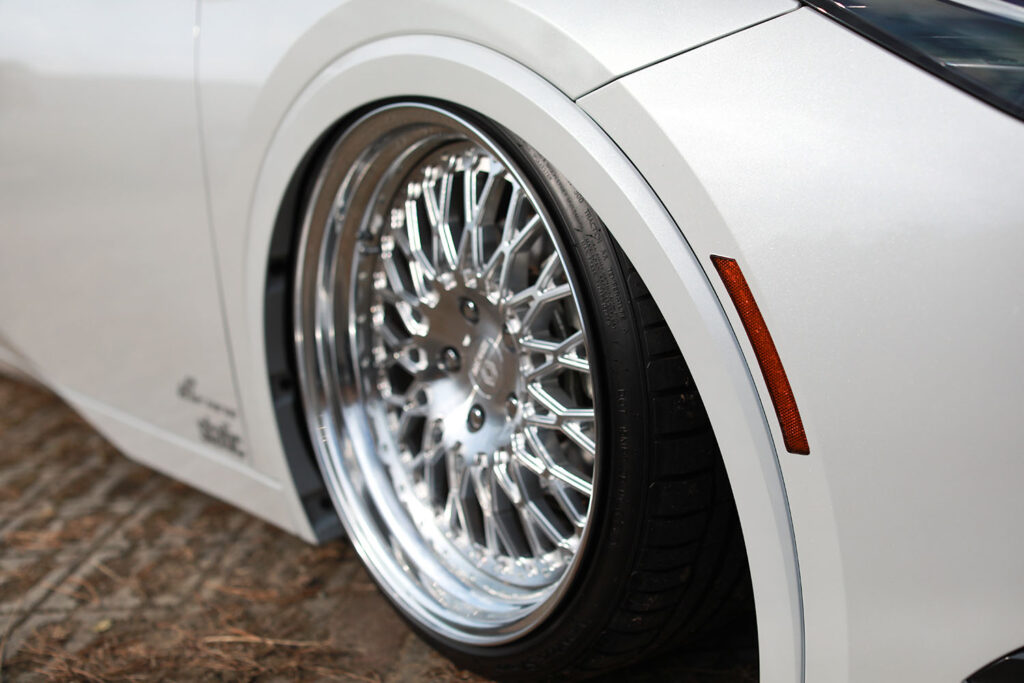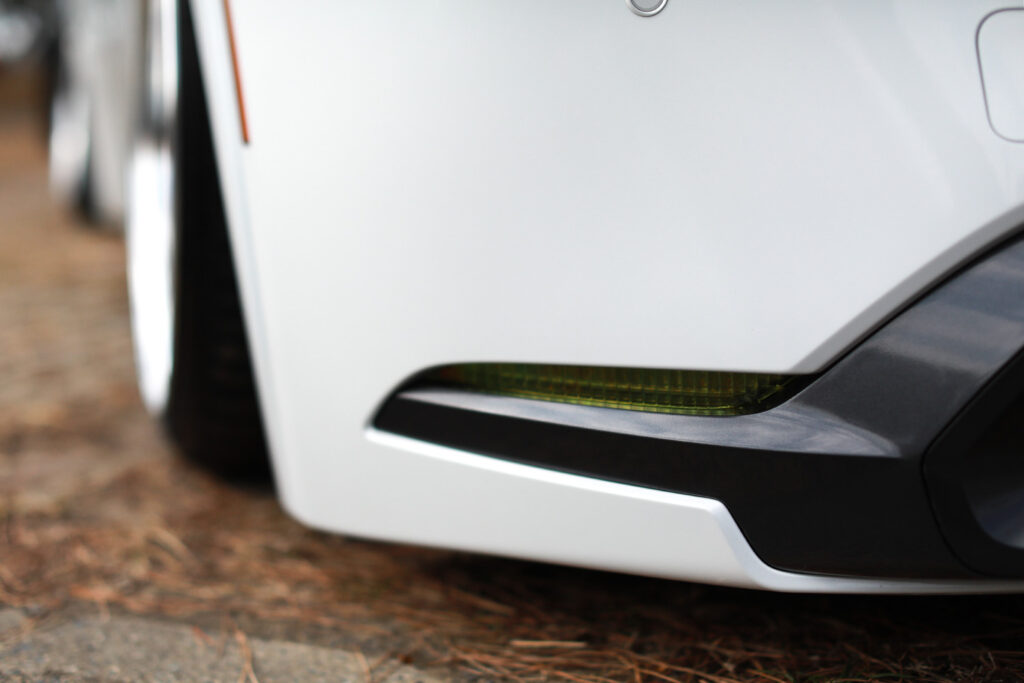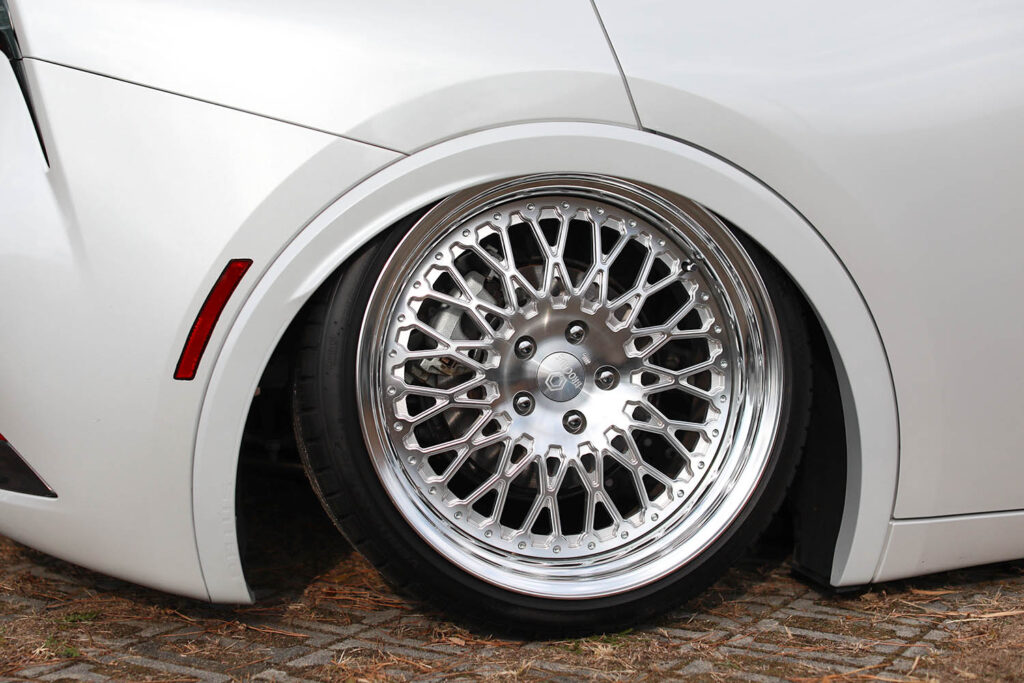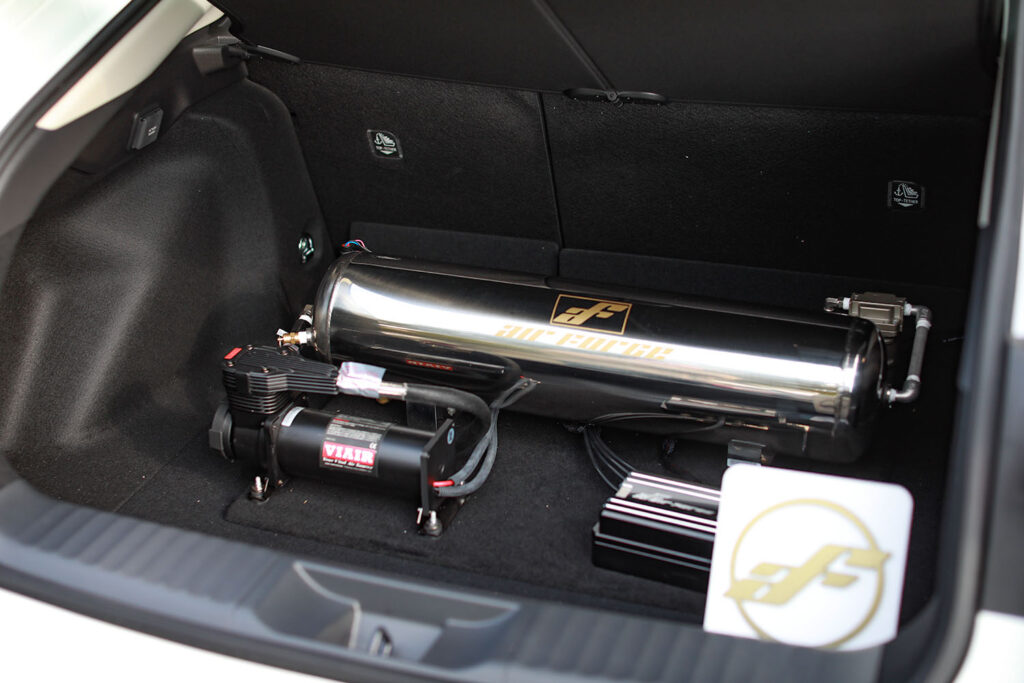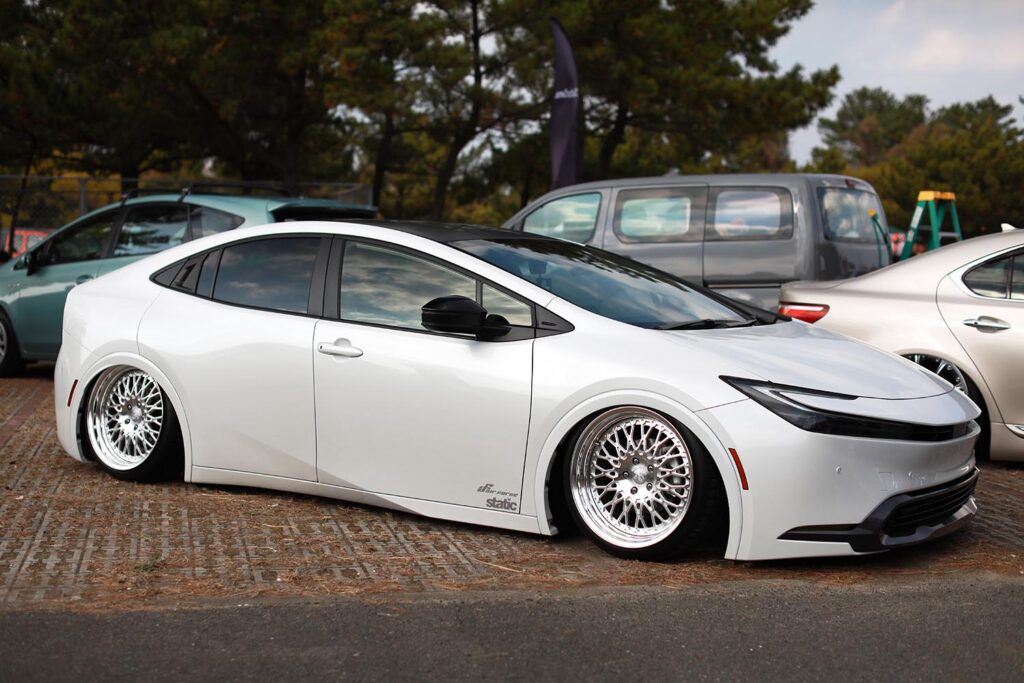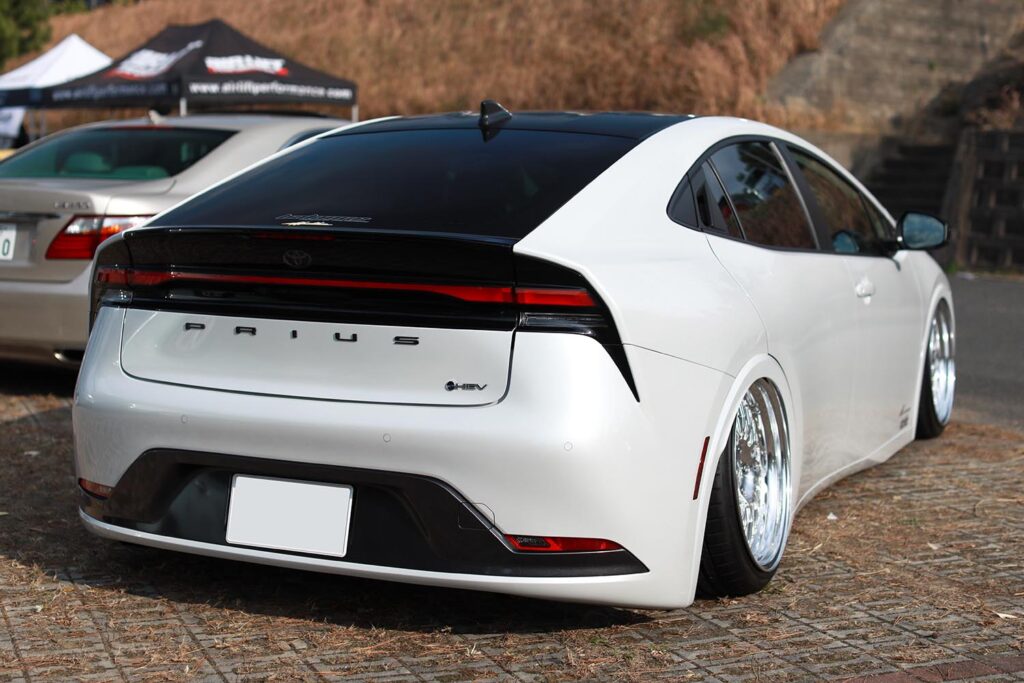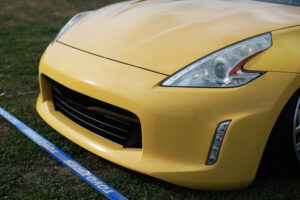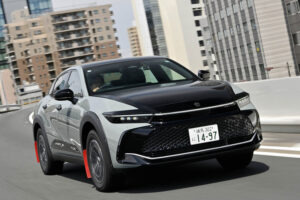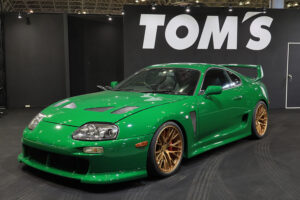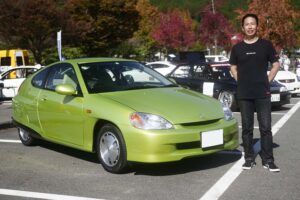What is “USDM”, a custom to enjoy dressing up to US specifications?
Japanese cars running in the U.S. have different specifications in minor details due to differences in laws and regulations. A custom that enjoys dressing up to such American specifications is called USDM (United States Domestic Market) = North American specifications. The USDM style is based on ordinary Japanese cars that are used daily, but with subtle changes to the specifications to imitate the American lifestyle. Let us introduce you to the Toyota Prius, an attractive vehicle with a casual dress-up that incorporates such USDM style.
He graduated from dress-up to US specs
Mr. Asaki, owner of a 2023 5th generation Toyota 60 series “Prius” was participating in the “8th Street International in Kyushu” held in Fukuoka Prefecture on December 3, 2023. In the past, he had enjoyed a dress-up sedan called a VIP, but about 6 years ago, his tastes changed to a simple customization with American specifications.
“Considering my age, I had a feeling that I would always have a cozy style. As a result, I ended up with this American-spec custom.”
Initially, he obtained a 3rd generation Prius 30 series, the same Prius, and enjoyed participating in events by adding little by little customizations. Next, he switched to a Toyota 9th generation “Camry”. He enjoyed dressing up this vehicle to American specifications as well, and obtained a new “Prius” in March 2023. He brushed up every part of the car and transformed it into what it is today.
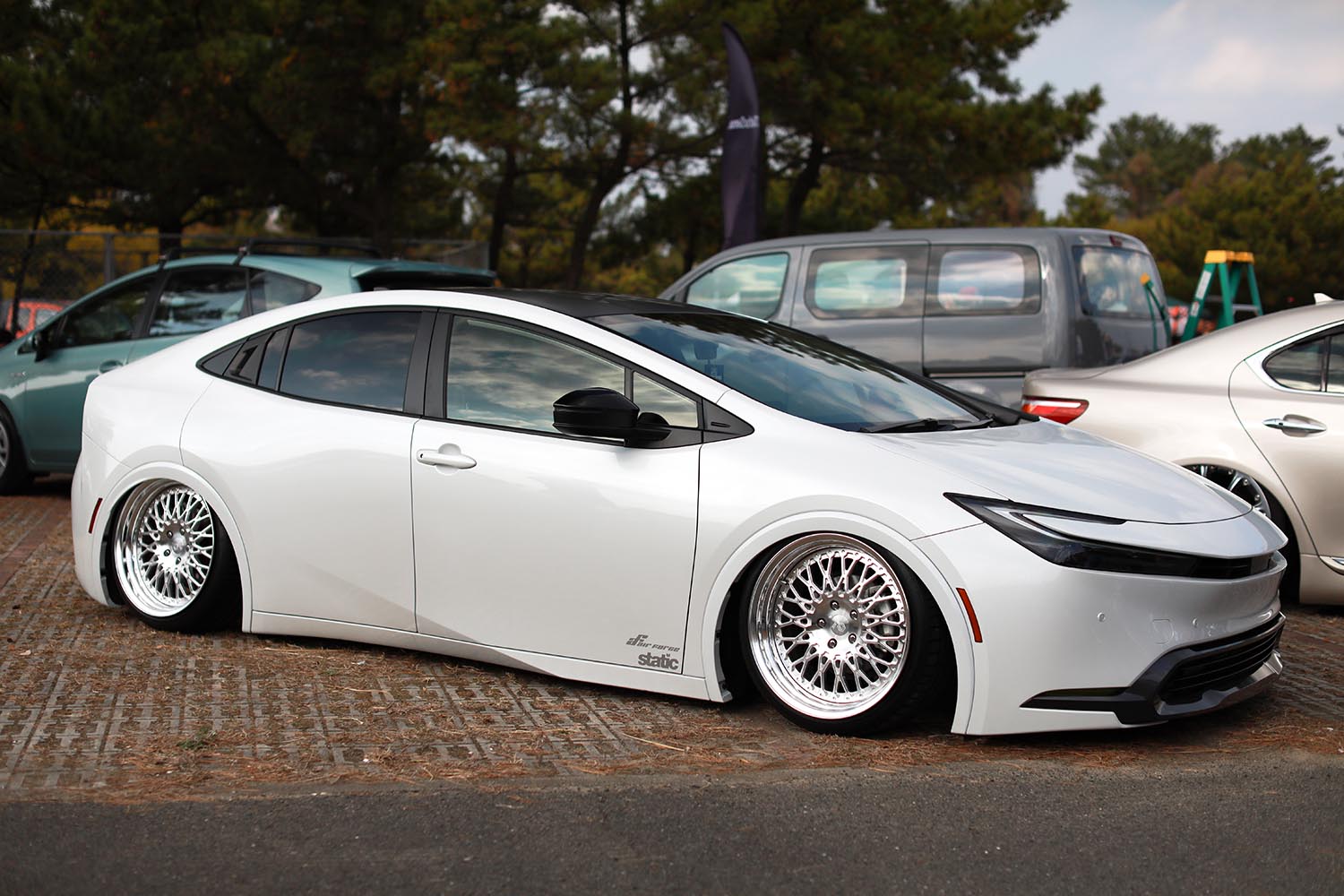
“American specifications are basically normal. However, the slight differences from the Japanese version are very cool! I think it’s cool that it doesn’t look like it’s been modified, but rather that it has an atmosphere without being obnoxious.”
Adding side markers creates an “American spec” atmosphere
Mr. Asaki chose the “G” model, the most basic of the models available for the current Prius. This was enough for him, as he had planned from the beginning to enjoy dressing up the car to include American specifications.
The key point of modification to achieve the American specifications was the addition of side markers while keeping the stock bumper in place. This is a genuine part unique to the American specifications, with yellow front markers and red rear markers installed at the front and rear ends so that the size of the vehicle can be seen at night. This was retrofitted to the Japanese version of the car.
“On the back side of the factory bumper, there is a mold for attaching the markers. Simply cutting the bumper accordingly and adding the side markers completed the project.”
While some users modify the parts as Mr. Asaki did, others install genuine American-spec parts. Either way, these parts alone give the vehicle an American spec atmosphere, making it a standard dress-up in the USDM style.
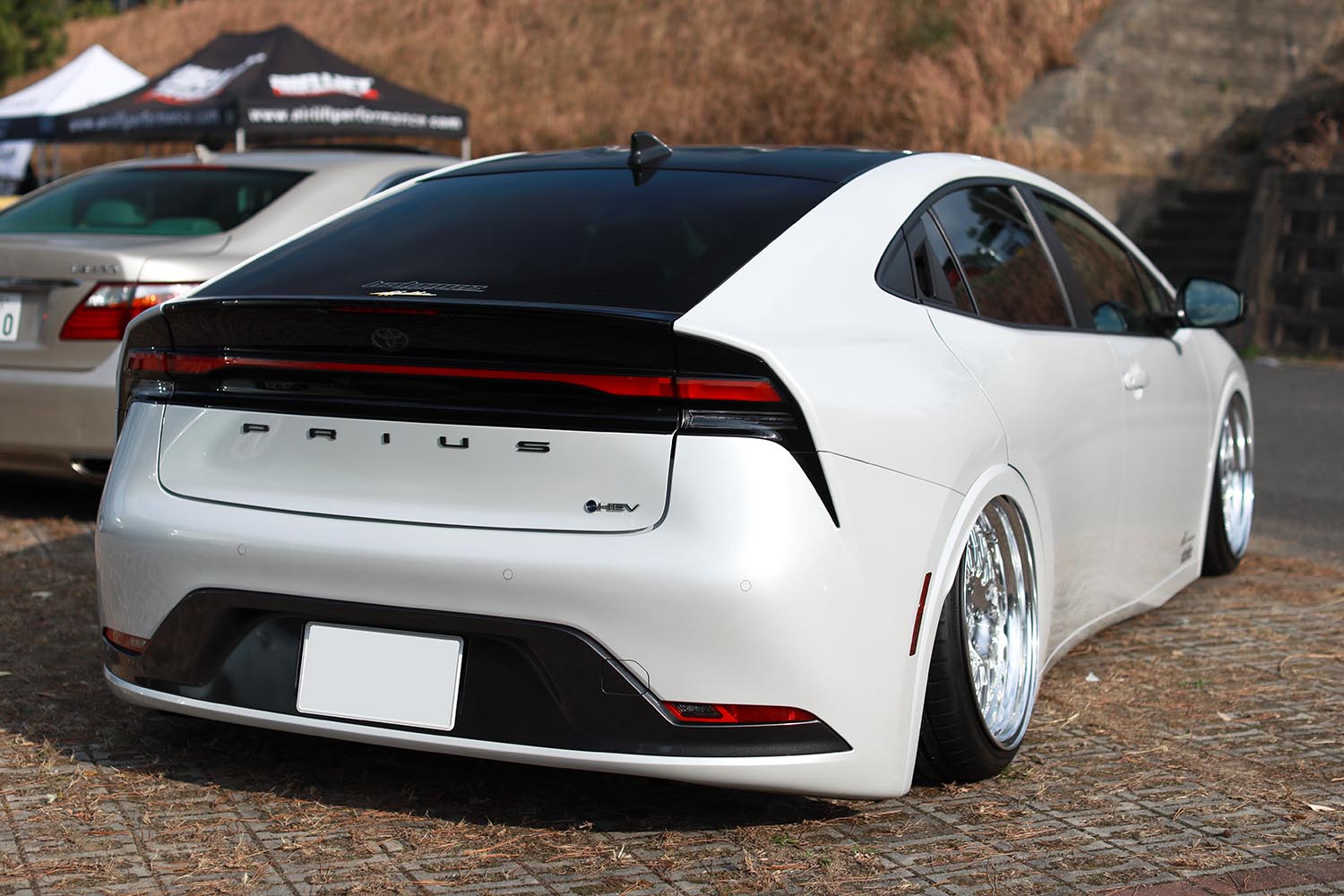
“G” model obtained with custom premise
In addition, the fog lamps, which are not included in the “G” model, were installed in the image of the “Z” model. In addition, the top was wrapped in semi-matte black to mimic the glass sunroof of the “Z”, again dressing it up with the factory model in mind. The Toyota mark was smoothed out, the material of the ducts was painted, etc. Anyway, the casual changes to the specifications that you wouldn’t know unless you were told are the kind of adult customization that Mr. Asaki is aiming for.
“For the suspension, we used Air Force air suspension and installed 19-inch front and rear 9.5J BROCADE mesh wheels with camber arms, uppers, and camber bolts changed. The camber angle is 5 degrees front and rear. It looked like 10J could be installed if the camber angle was further lowered to 7 degrees, but I decided not to go there considering my age.”
Although the vehicle is as stock as possible, the selection of parts and the atmosphere of the suspension were aimed at a casual American feel. This is what Mr. Asaki was talking about, “a cool style with a little difference without being obnoxious.”






